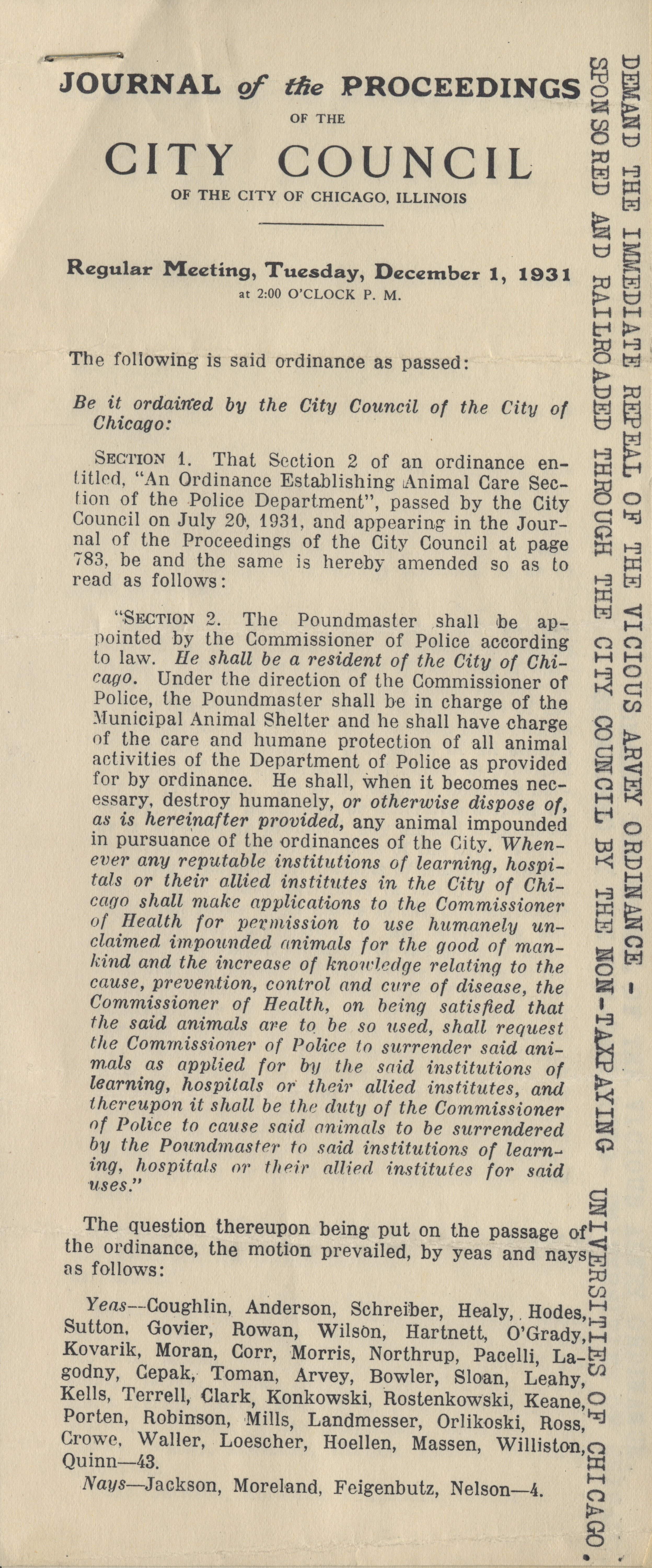The Arvey Ordinance
The Arvey Ordinance
Chicago: Journal of the Proceedings of the City Council of the City of Chicago, Illinois.
December 1, 1931
The Illinois Society for Medical Research Records
Judging by the marginalia, this copy of the Arvey Ordinance was circulated among members of antivivisectionist groups during one of several repeal efforts. Critics of the ordinance frequently attacked it on economic grounds, arguing that it was unfair for tax-exempt universities to acquire dogs free of charge from a pound supported by taxpayers.
During the 1920s, the medical schools of Chicago enjoyed an unofficial arrangement with the city pound, which supplied doctors with unclaimed dogs for experimental purposes. Dr. Arno B. Luckhardt, a physiologist at the University of Chicago, for example, used strays to test ethylene as a general anesthesia. In January 1931, the University of Chicago sourced 329 dogs from the pound and Northwestern acquired 355.
Antivivisectionist groups dealt the medical schools a surprise blow in July 1931, when they secured the passage of a city ordinance that would have placed the pound under the control of antivivisectionists and cut off the supply of dogs.
The ISMR leapt into action and began lobbying aldermen to pass an amendment. Back in 1922, physiologists at Washington University Medical School in St. Louis had succeeded in passing an ordinance granting them access to impounded animals. Doctors involved in that effort encouraged their Chicago peers to pursue similar legislation. In subsequent hearings before the judiciary committee of the city council, the ISMR prevailed. Named for Alderman Jacob Arvey, the Arvey Ordinance passed on December 1, 1931.

